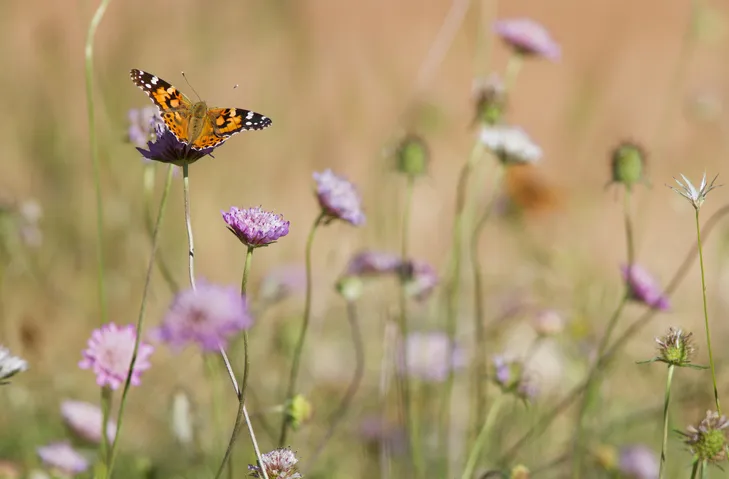Spotting a butterfly is a delight in the spring, summer and autumn months, and these pretty insects play an important role in pollinating flowers.
There are 59 species of butterfly that grace Britain's shores annually, including regular migrants, all varying in size, shape and colour – from yellow, red and brown, to purple, blue and white.
In our expert butterfly guide, we reveal tips on when, where and how to see common (and some rare) British butterfly species, how to identify them, and the best ways to attract more butterflies and other pollinators to your garden.
Learn more about the UK's insect species with our expert moth, bee, caterpillar and beetle guides.
How many species of British butterflies are there?
According to wildlife charity Butterfly Conservation, there are 59 species of butterfly in the UK. 57 of these are resident species and two are regular migrants that visit and breed in the UK every summer.
How long do butterflies live?
The average lifespan of a butterfly is short, with most adult species only surviving for two to four weeks – many species have even shorter lifespans. Butterfly populations in the UK are affected by adverse weather conditions such as drought, wet and windy or unseasonably cold conditions.
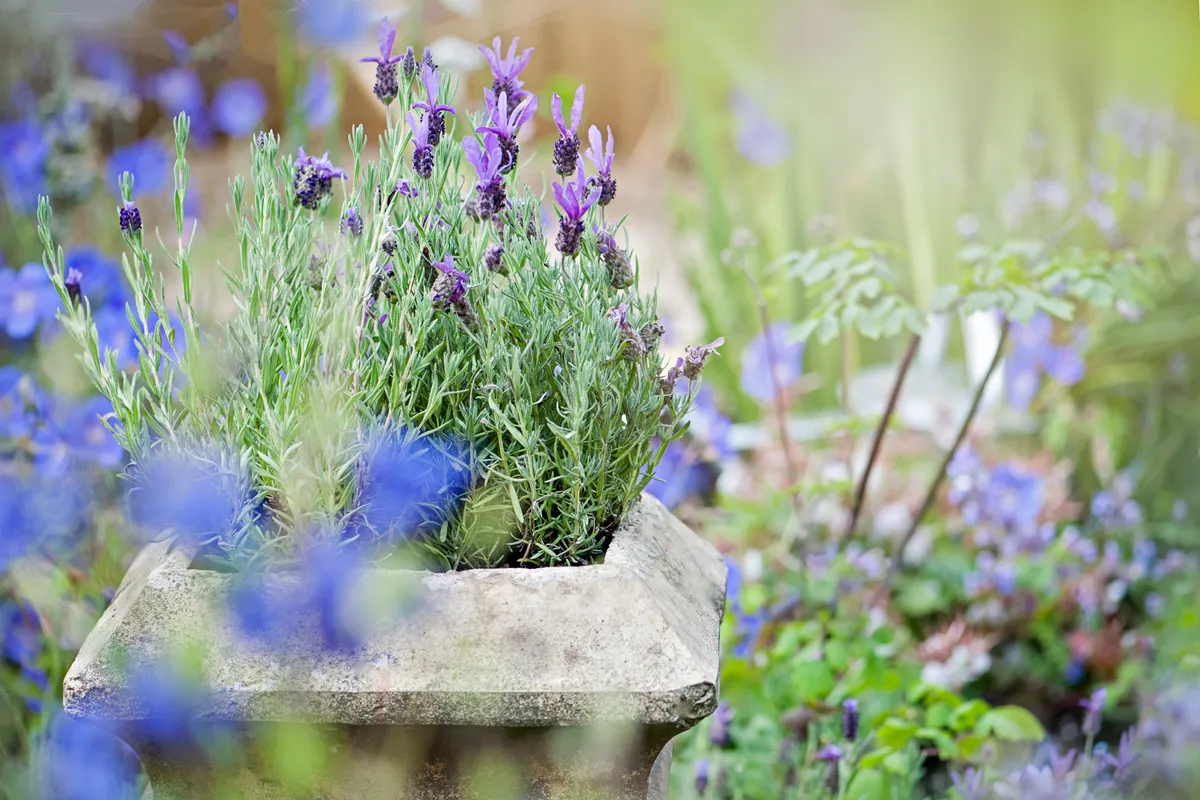
What is Britain's rarest butterfly?
There are a number of rare species of butterfly in the UK, including the heath fritillary and the high brown fritillary.
The latest Red List assessment (2022) placed half of Britain’s butterfly species on the List. Of the 62 butterfly species assessed, half are now on the Red List, with 24 classed as threatened (8 endangered, 16 vulnerable), five near threatened, and four extinct: black-veined white, large tortoiseshell, large copper, and Mazarine blue.
Why are British butterflies endangered?
According to the State of the UK's Butterflies 2022 report, 80% of British butterfly species have decreased in abundance or distribution, or both since the 1970s. Although the findings show there are winners and losers depending on environmental conditions such as weather and availability of food sources, British butterflies have lost their total abundance at 6% of monitored sites and 42% of their distribution over the period 1976-2019.
Most habitat specialist species, those restricted to particular habitats such as flower-rich grassland, heathland and woodland clearings, have declined dramatically in the UK, with butterfly numbers being particularly hard hit in England. As a group, their abundance has decreased by over one-quarter (-27%) and their distribution by over two-thirds (-68%) since 1976.
Meanwhile, wider countryside species, butterflies that can breed in the farmed countryside and in urban areas, have fared less
badly, although as a group they have decreased since 1976 (-17% in abundance and -8% in distribution).
Close monitoring of butterfly numbers is crucial to their survival and conservationists from the Butterfly Conservation are urging people to get involved with this year's Big Butterfly Count.
How to take part in the Big Butterfly Count
Wildlife lovers are being urged to take part in the annual Big Butterfly Count – and what better reason to find a shady spot for 15 minutes? Here is our guide to the most common butterfly species to spot in the UK and how to take part in this year's count.
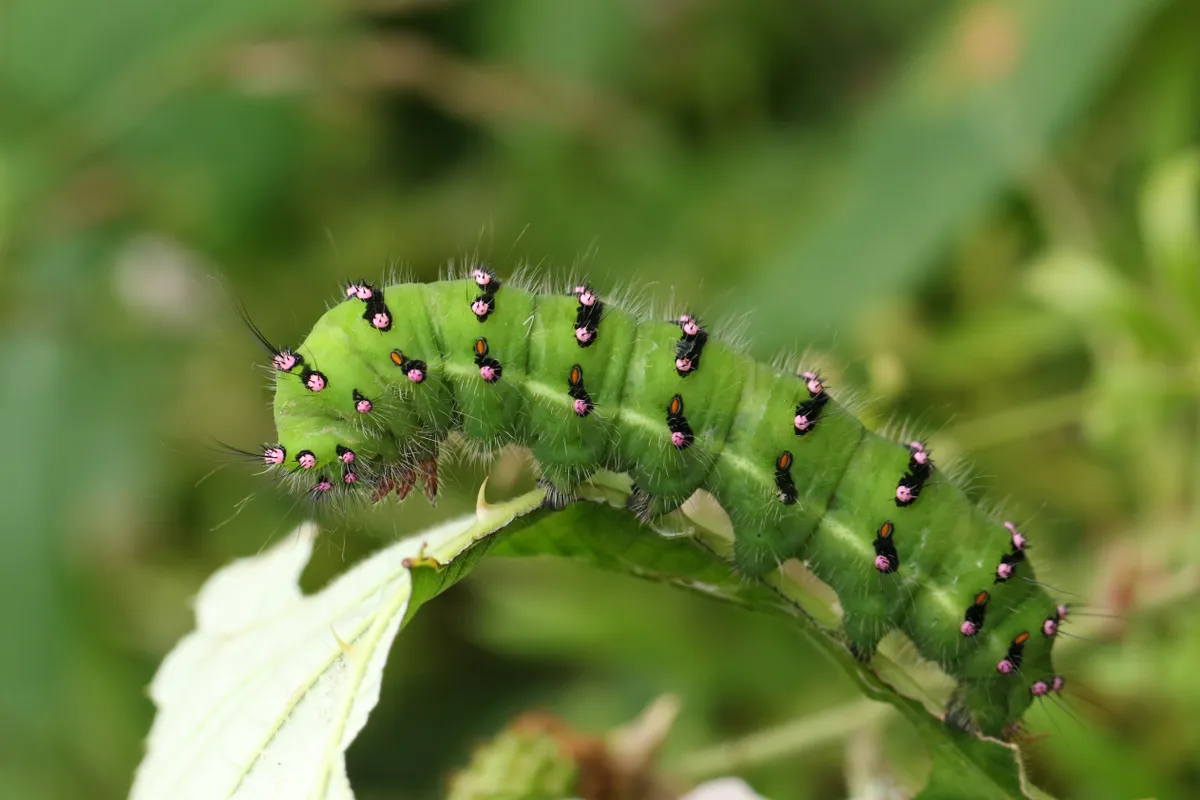
Common British butterfly species
Small tortoiseshell (Aglais urticae)

This was our most quintessential late summer garden butterfly, regularly claiming the month of September as its own, feeding collectively on flowers such as Michaelmas daisies and Sedum spectabile prior to hibernation.
We took garden small tortoiseshells for granted. But in recent years numbers of this deeply loved butterfly have crashed, particularly in the South East – it is thought because of a newly arrived parasitic fly that heavily parasitizes the gregarious larvae in summer, but the necessary scientific studies have not been done. Also, small tortoiseshells used to hibernate successfully in buildings, but today’s centrally heated houses are too warm for them, they desiccate and die.
Red admiral (Vanessa atalanta)
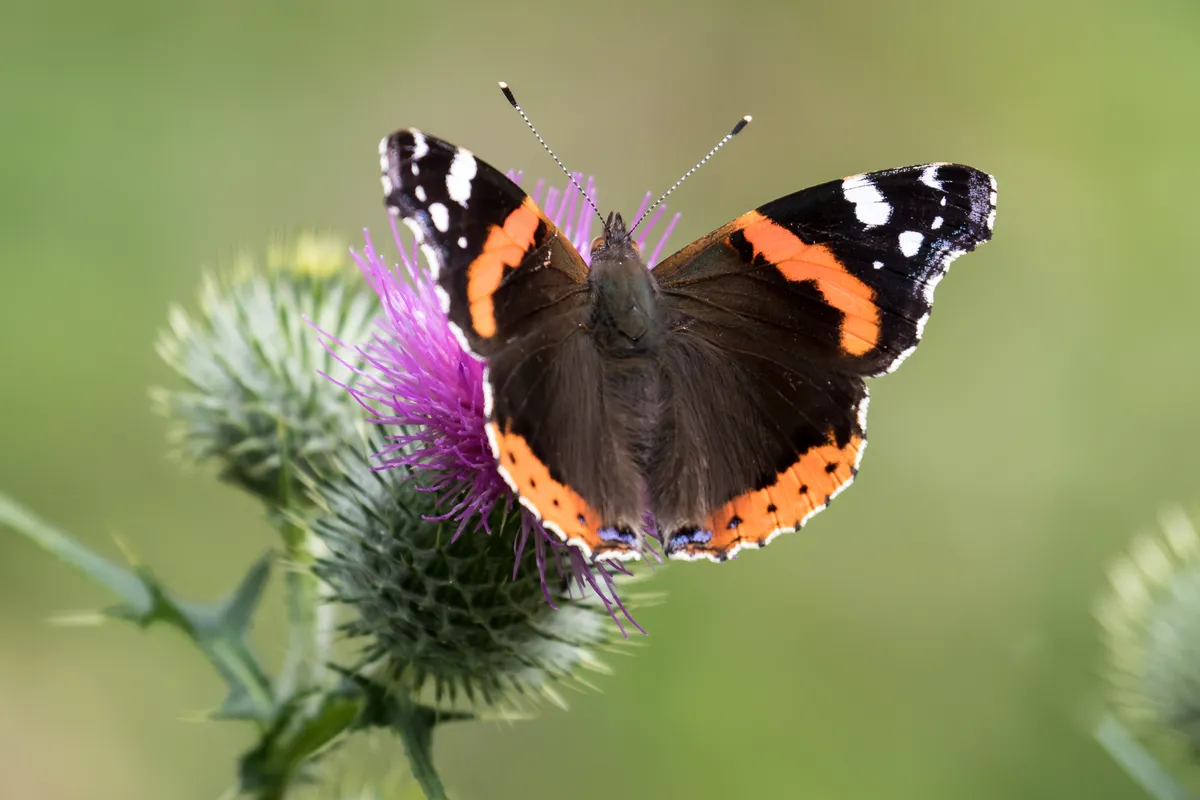
The familiar and distinctive red admiral is at its most numerous in the autumn. Traditionally, it has occurred primarily as a mid-summer migrant here, producing a home-grown brood which is truly abundant in some autumns, as in 2021. This brood appears during September and October.
For a week or two, these butterflies feed up on flowers, or on fallen apples and pears. They are then faced with a choice: hibernate here or migrate south. In bygone times, most emigrated, congregating along the coast before venturing across the English Channel. An increasing number, though, now successfully hibernate through our modern milder winters.
Painted lady (Vanessa cardui)

This migrant butterfly has arrived in the UK in good numbers in recent years, as worn grey pilgrims from north Africa. It produced a home-grown brood during August and September, after its larvae had fed up on field thistles.
Unlike its close cousin, the red admiral, it will return south during late August and September, after feeding up on flowers for a short while, gathering strength on the likes of garden buddleia. By late September none will remain, having flown south on high level winds. Who knows when this global wanderer will next grace our shores?
Caterpillars guide
Caterpillars in the UK come in many shapes and sizes, from little green ones to striking yellow and black ones. But which is which, and what butterfly or moth do they turn into? Learn how to to identify some of the UK's most common and spectacular species with our beginner's guide to caterpillars.
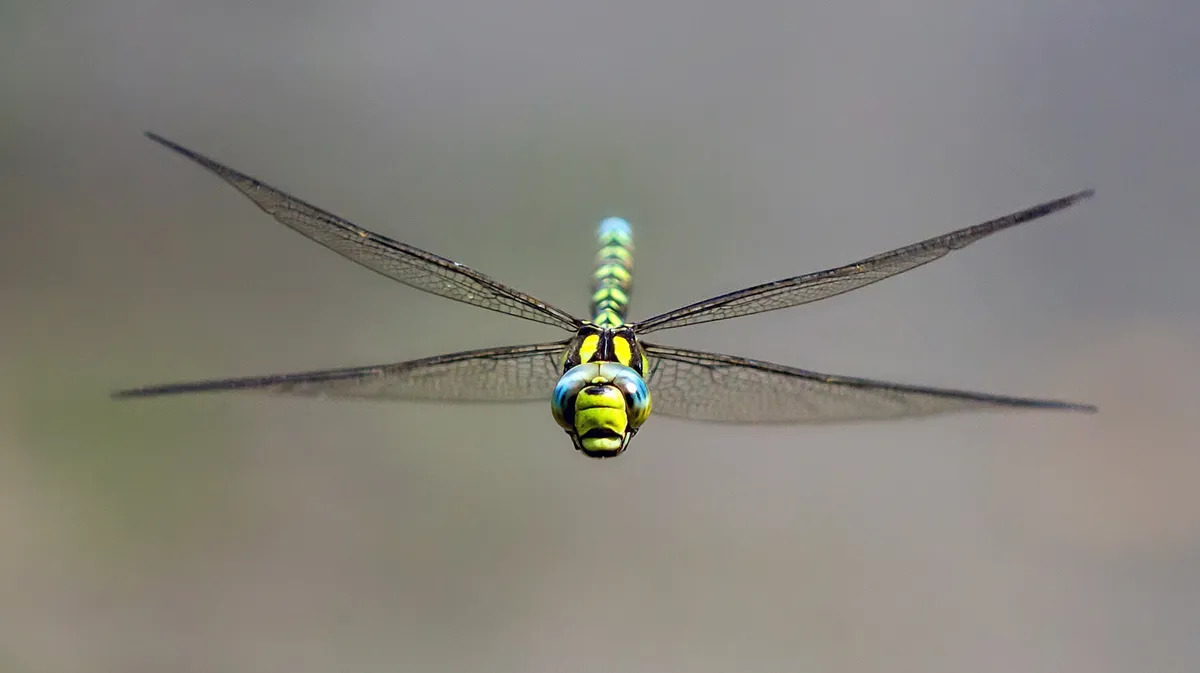
Speckled wood (Pararge aegeria)
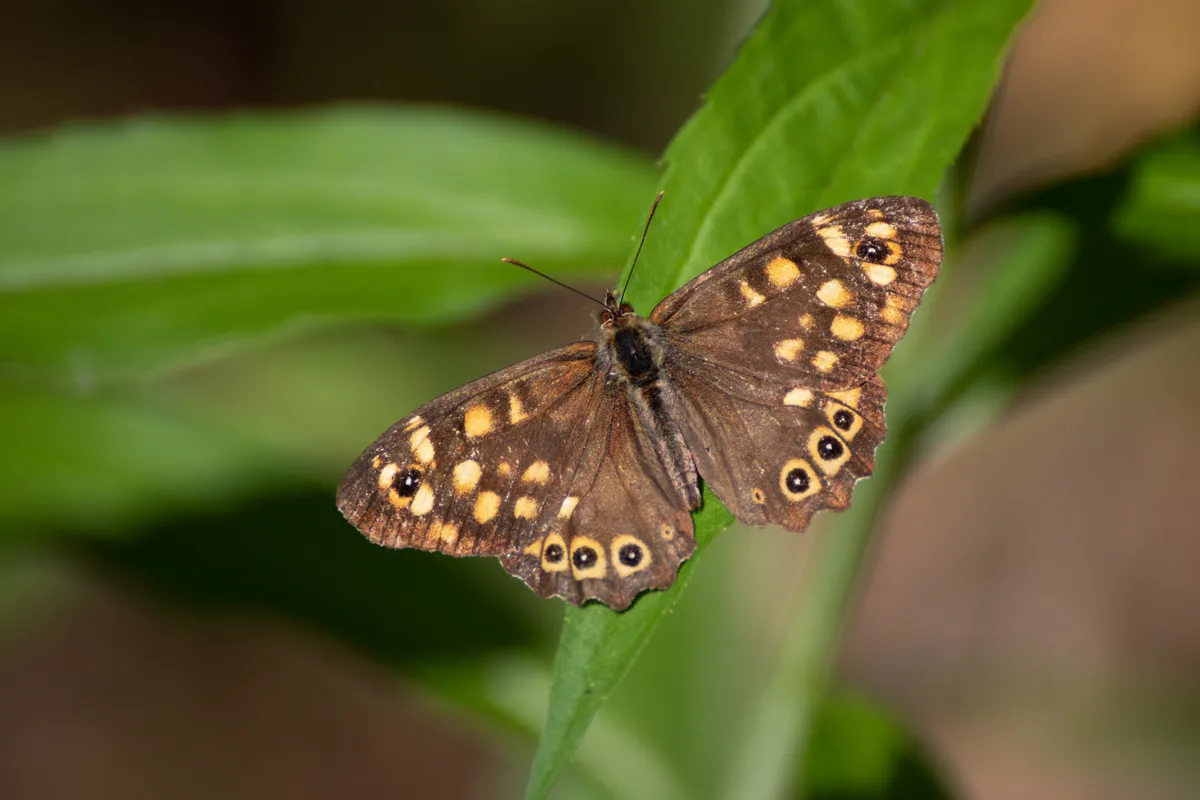
This is a good news species, having increased its range dramatically in recent years – a hundred years ago it was a local southern species. It now occurs over most of the United Kingdom, probably as a beneficiary of milder winters, breeding on soft grasses in dappled shade.
In most districts it is at its most numerous during September, but it is a creature of shady, bushy places, as its name suggests. In mild autumns, which are not too wet or windy, some speckled woods last deep into early November. Look for them feeding on blackberries along wood edges.
Comma (Polygonia c-album)
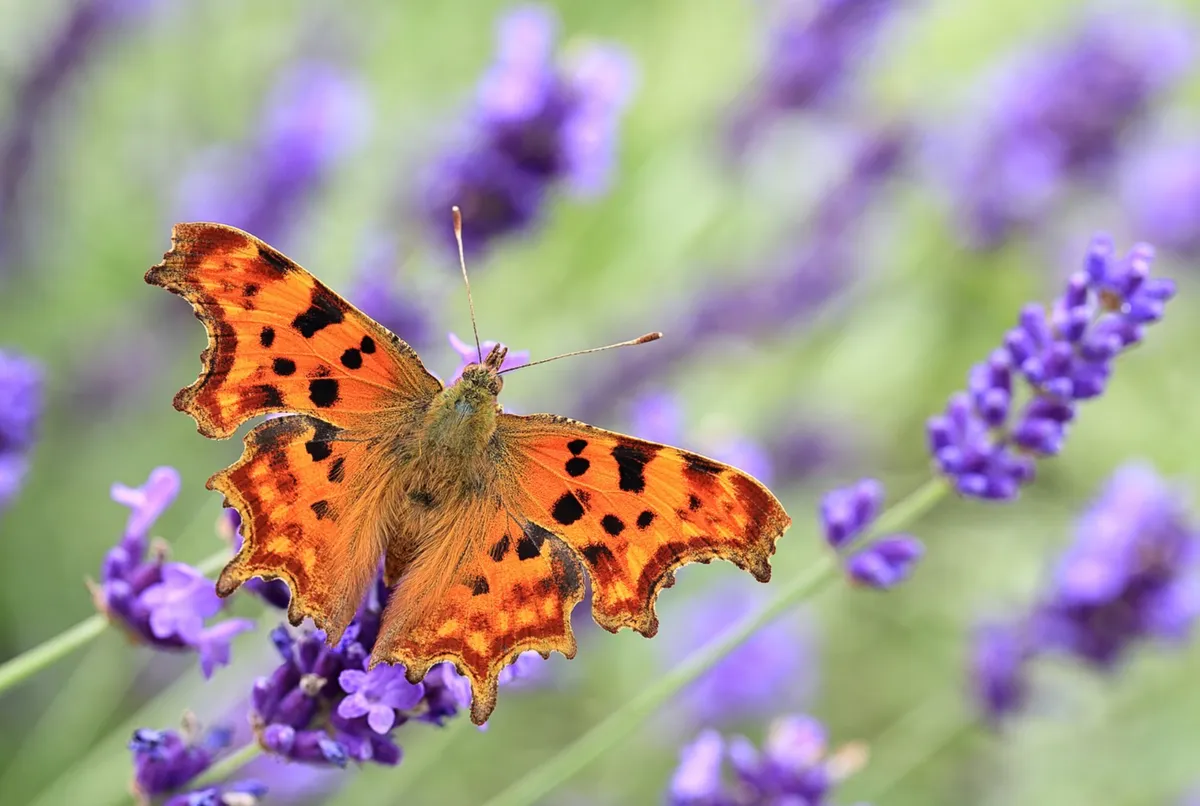
The comma is our ultimate autumn butterfly, looking just like a ragged autumn leaf. In September and October it feeds up on autumn flowers, favouring ivy and nectar-rich garden plants such as Verbena bonariensis.
It then hibernates for at least five months, unmated, often amongst loose leaf litter, in coppiced hazel stools or hedge bottoms, disguised as fallen leaves, waking in March. Then, the males set up territories, where courtship and mating occurs. The mated females fly off to lay eggs, on lone nettles or on elm trees, and the males, exhausted, die off. A new brood emerges in June.
Gatekeeper (Pyronia tithonus)
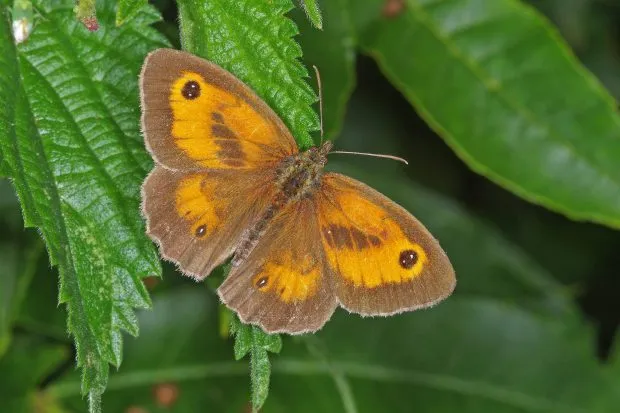
Formerly called the hedge brown, this is a scrub-edge butterfly of July and early August days in southern Britain, a smaller, more orangey version of the meadow brown. Eggs are laid on fine grasses along sunny edges of scrub patches, hedges or bramble patches. Adults feed peacefully on flowers, favouring bramble and marjoram. The males are remarkably well-behaved, quietly courting the passive females and not indulging in the territorial aggression shown by most male butterflies.
Identification tip: look for the two white spots in the large black dot in the forewings, and the uniform mid-brown wing borders.
Meadow brown (Maniola jurtina)

The archetypal meadowland butterfly, which bibs and bobs amongst grass heads all summer long, throughout lowland Britain. Its nocturnal larvae feed on a wide range of native grasses, but avoid rye grass, the standard grass of modern farm fields. Consequently, the meadow brown is nothing like as common as it used to be. It can still occur in profusion, justling for position on bramble and thistle heads along woodland rides and in other grassy places.
Oddly, it doesn’t like being approached and is a difficult butterfly to photograph. It can only be confused with the equally dark ringlet, which has golden ring markings.
Marbled white (Melanargia galathea)

Our easiest butterfly to identify, evenly chequered in black and white. Flies in midsummer, occurring in tight-knit colonies in rough, usually dry grasslands. Both sexes feed avidly from flowers, favouring knapweeds and thistles. In the evenings, they bask communally in clumps of sturdy vegetation, before roosting in loose aggregations. Relatively easy to photograph, a beginner’s butterfly. A southern species, steadily expanding its habitat range and moving north.
Eggs are laid, dropped even, amongst grasslands containing fescue grasses, on which the young larvae feed before graduating on to taller, broader-leaved and coarser grasses as they develop.
Peacock (Aglais io)

A large butterfly, easily identified by its peacock eye, RAF wing markings. The black wing undersides tell of a butterfly that overwinters in dark places, such as sheds, log piles and tree holes.
In spring, the males set up territories, into which unmated females stray. Eggs are then laid on nettle patches in warm, south-facing situations. The shiny and spiny black caterpillars feed up together, then wander off to pupate, emerging as butterflies from midsummer into late July. These splendidly pristine adults feed up a while on nectar-rich flowers before going into lengthy hibernation.
Orange-tip (Anthocharis cardamines)
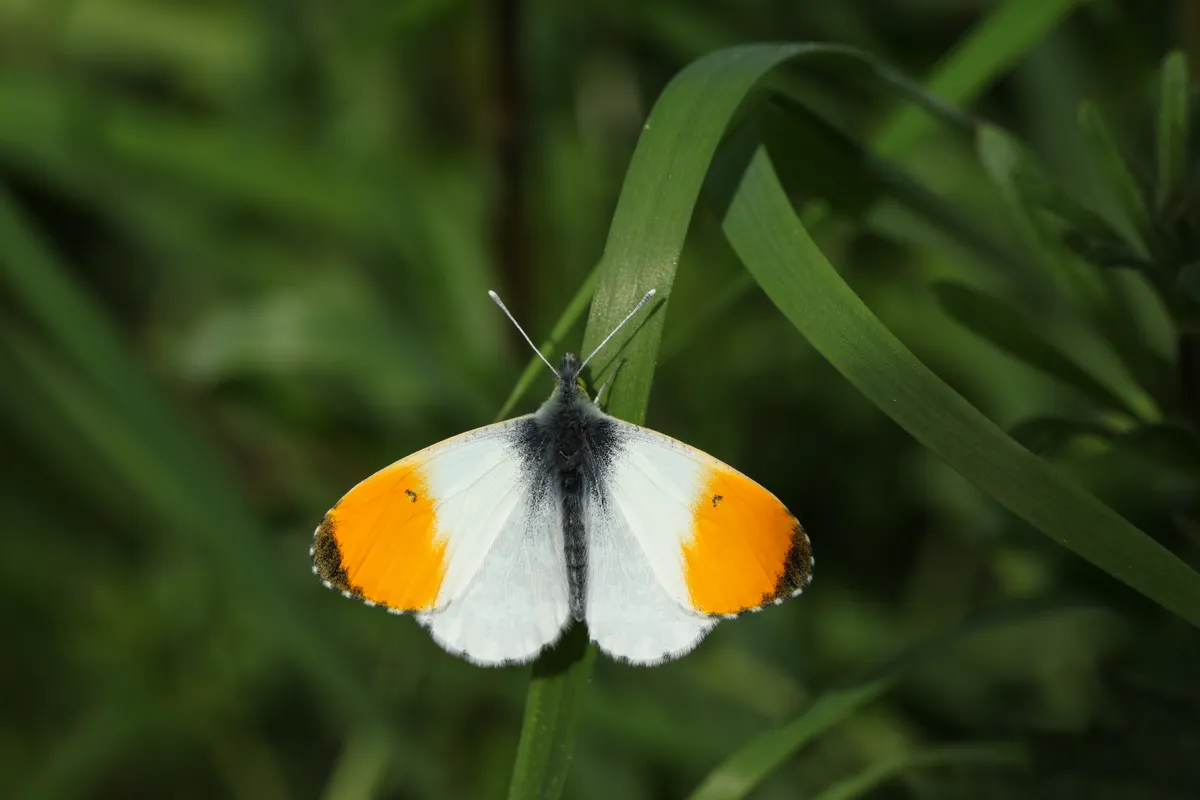
Our most quintessential springtime butterfly, but only the male possesses the distinctive flame-orange flash. The female can be mistaken for a small white or a green-veined white – you have to spot the distinctive mottled-green hindwing undersides.
Flies throughout April, into late May, over much of Britain. Caterpillars feed on the developing seed pods of various crucifers, especially garlic mustard (or ‘Jack in the hedge’), hedge mustard and lady’s smock (‘cuckoo flower’). They pupate on sturdy stems close by, hatching out in early spring. The males wander waysides, paths and wood edges, almost ceaselessly. The females, too, disperse far and wide.
Large white (Pieris brassicae)
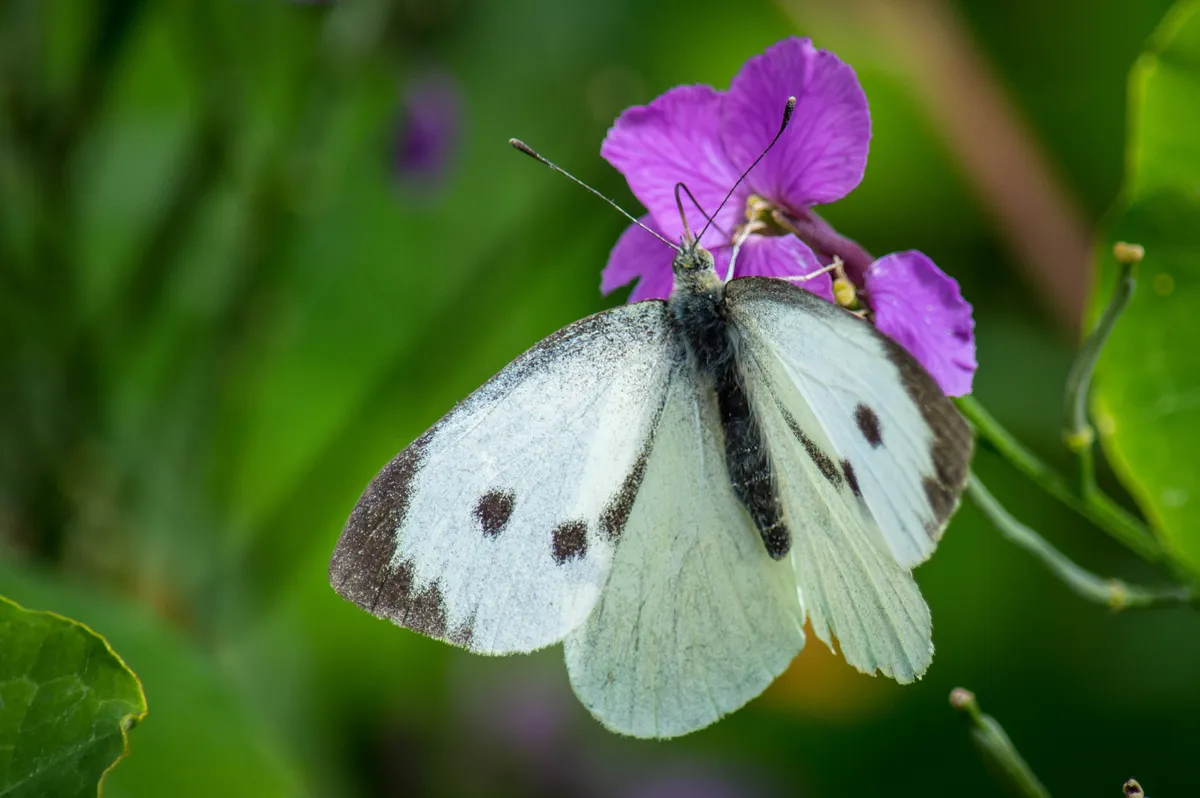
Our so-called cabbage white consists of two similar species, one smaller, one larger – though there are small large whites and large small whites. Both breed on a wide range of wild and cultivated members of the cabbage family, including nasturtiums.
Small white larvae are solitary and green, those of the large white are gregarious, black and yellow. Both species overwinter as pupae, producing sparse spring broods which generate more prolific later broods. August is the main month for cabbage whites. Both species are widespread throughout lowland Britain and also arrive here as migrants from across the Channel.
Brimstone (Gonepteryx rhamni)
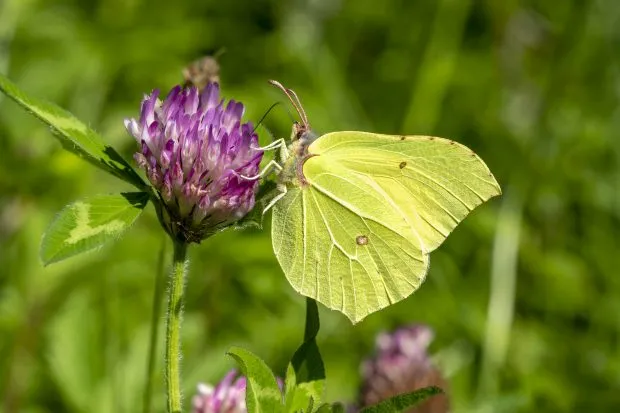
The original ‘butter-coloured flie’, and a habitual wanderer of woods and lanes. The golden males are harbingers of spring, having overwintered in bramble or ivy tangles, unmated. The paler females soon pair up, and then wander off in search of the buckthorn bushes on which they lay their cylindrical eggs.
The cryptic, leaf-green green caterpillars pupate and emerge as butterflies in July. These quickly feed up on flowers, favouring runner bean flowers in gardens, before going into hibernation, to grace the next spring. Widespread in much of southern Britain. Easily helped by planting buckthorn bushes in gardens.
Holly blue (Celastrina argiolus)
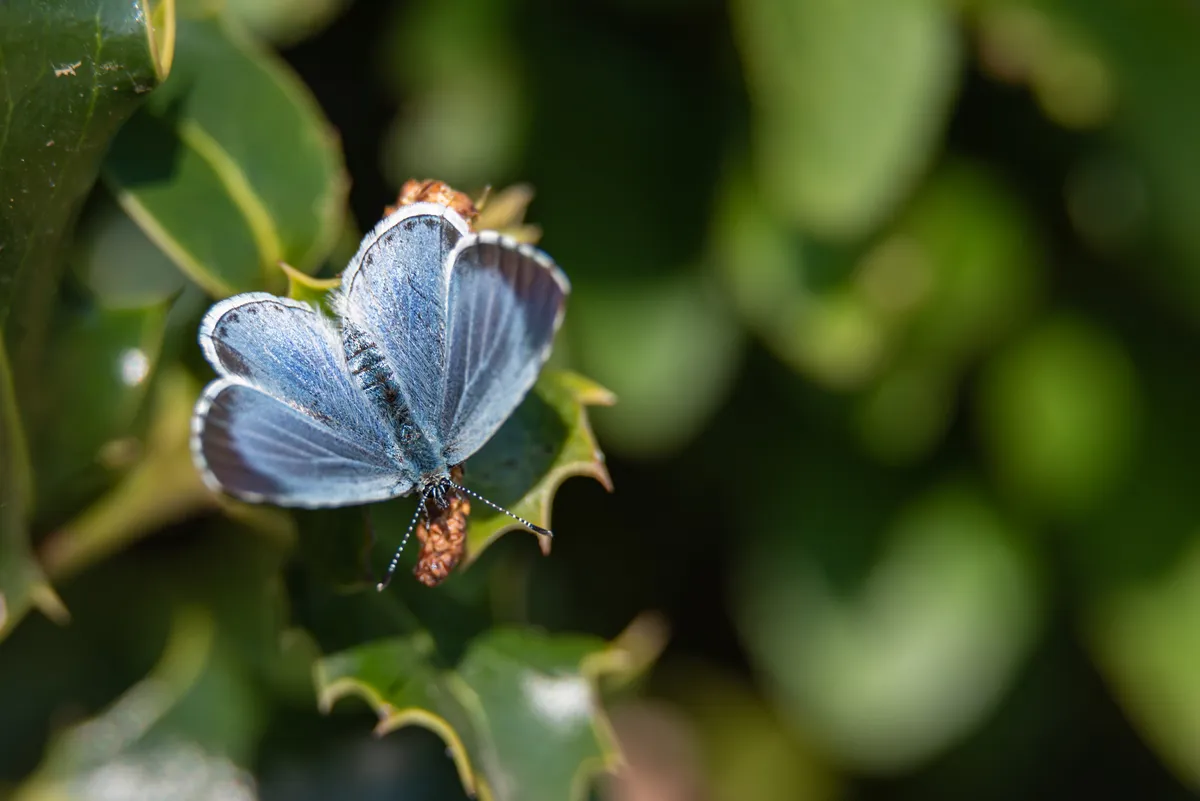
The blue butterfly most commonly seen in gardens and towns, and the only blue that readily flies around bushes. It can be identified by habitat and habit. Other identification tips: it used to be called the azure blue, being our most azure blue, and the wing undersides lack orange spotting (separating it from the common blue).
Occurs in two broods, in spring and high summer, though numbers vary greatly from year to year. Larvae feed on the developing fruits and berries of a wide range of shrubs, particularly holly in the spring and ivy in late summer.
Large skipper (Ochlodes sylvanus)
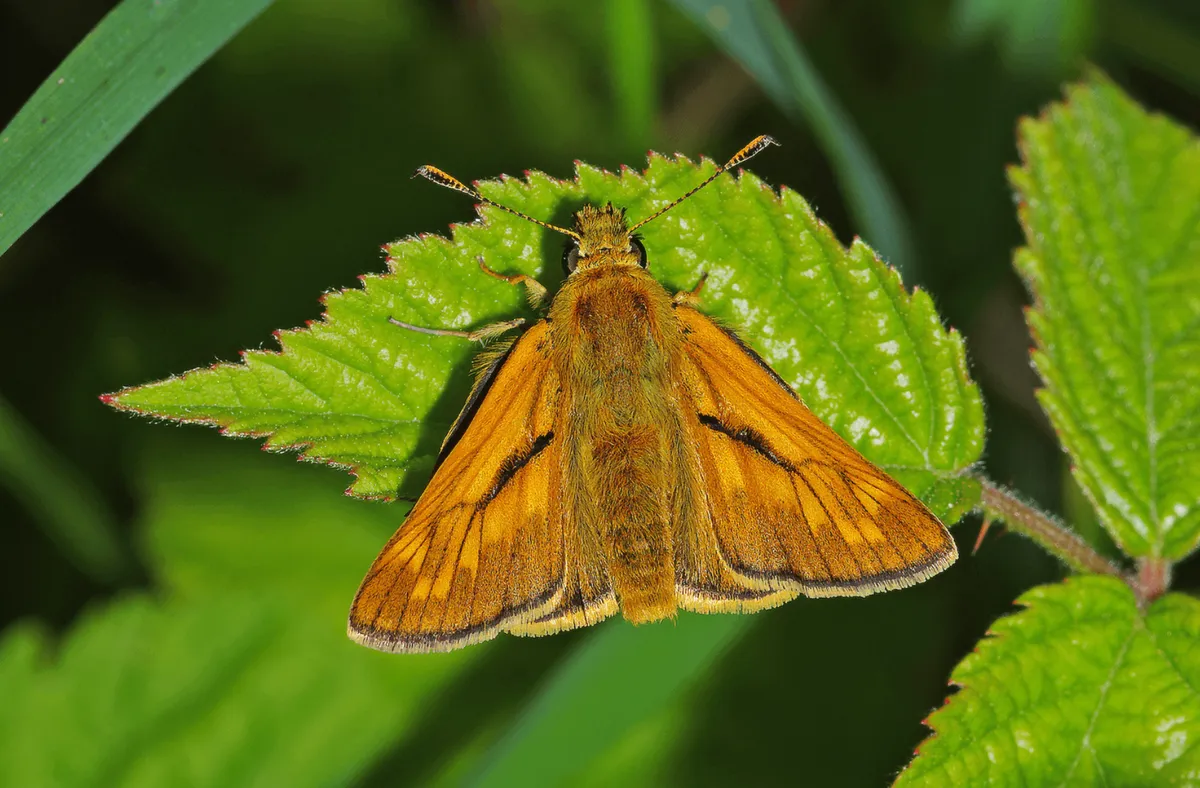
A jump jet of a butterfly, capable of rapid vertical take-off and whizzing around at the highest speeds. The hotter the June and July sunshine, the faster the dull-orange males fly as they dispute territorial possession. No flowering bramble patch is complete without a stroppy male large skipper.
This is our largest and most widespread skipper, which is essentially an insect of rough, flowery and well-sheltered grassland, where the larvae feed on a range of broad-leaved grasses and sedges.
Small skipper (Thymelicus sylvestris)

This small, golden skipper is easily confused with the less common Essex skipper. Technically, the undersides of the small skipper’s antennae are orange, whilst those of the Essex are dipped in black ink, but we can only see these when the butterflies are inactive.
The best trick is to look for the presence Yorkshire-fog grass, on which nearly all Small Skipper colonies are based. If that distinctive grass is absent, you are probably looking at the Essex. Both species occur in colonies amongst rough grassland, flying during the midsummer period, and visit flowers such as thistles, knapweed and ragwort.
Small Copper (Lycaena phlaeas)
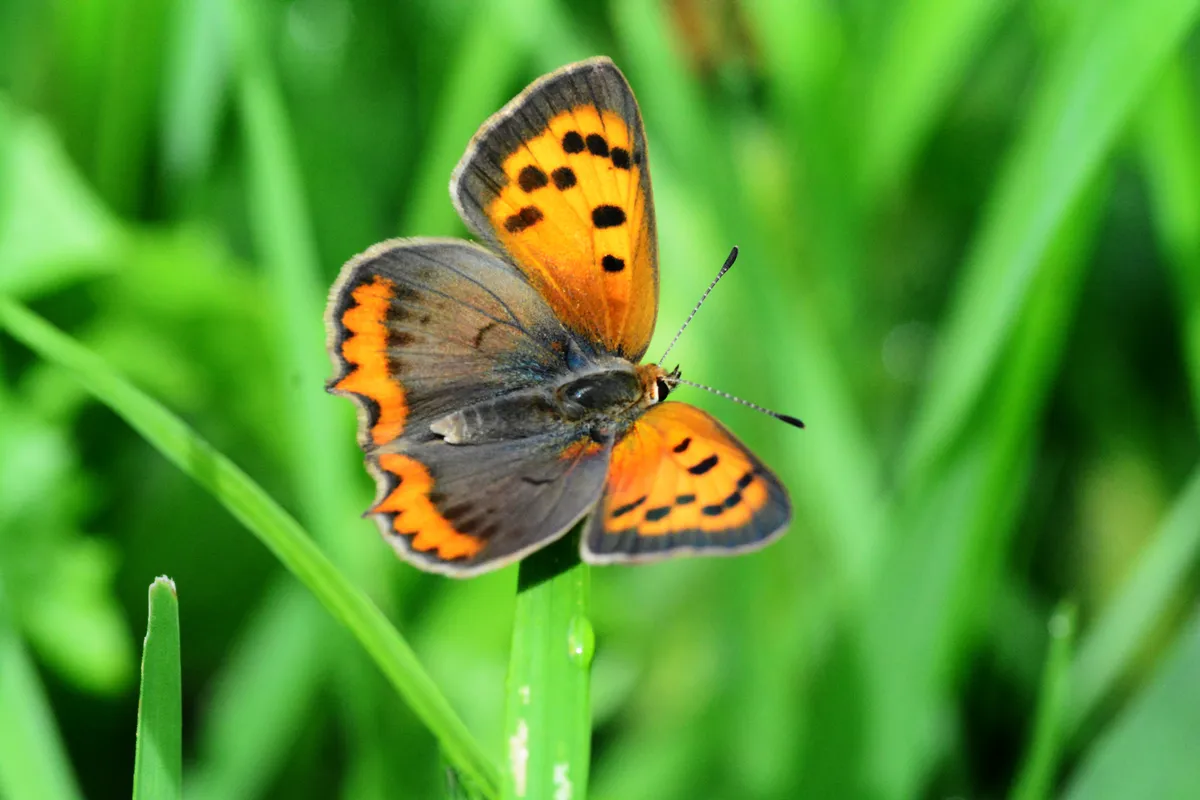
A tiny but pugnacious fiery dart of a butterfly, occurring in grasslands, heaths, moors and dunes throughout our islands. There are spring and high summer broods, and down south an autumn brood after warm summers. The spring brood is often sparse. Can abound during August and September in hot summers.
Breeds on sorrels and docks, favouring tiny plants of sheep’s sorrel growing in dry, sandy and acidic soils. On neutral and calcareous soils, Common sorrel is favoured, and sometimes small dock plants, almost invariably in warm micro-climate situations. A ‘bare ground’ specialist.
Common blue (Polyommatus icarus)
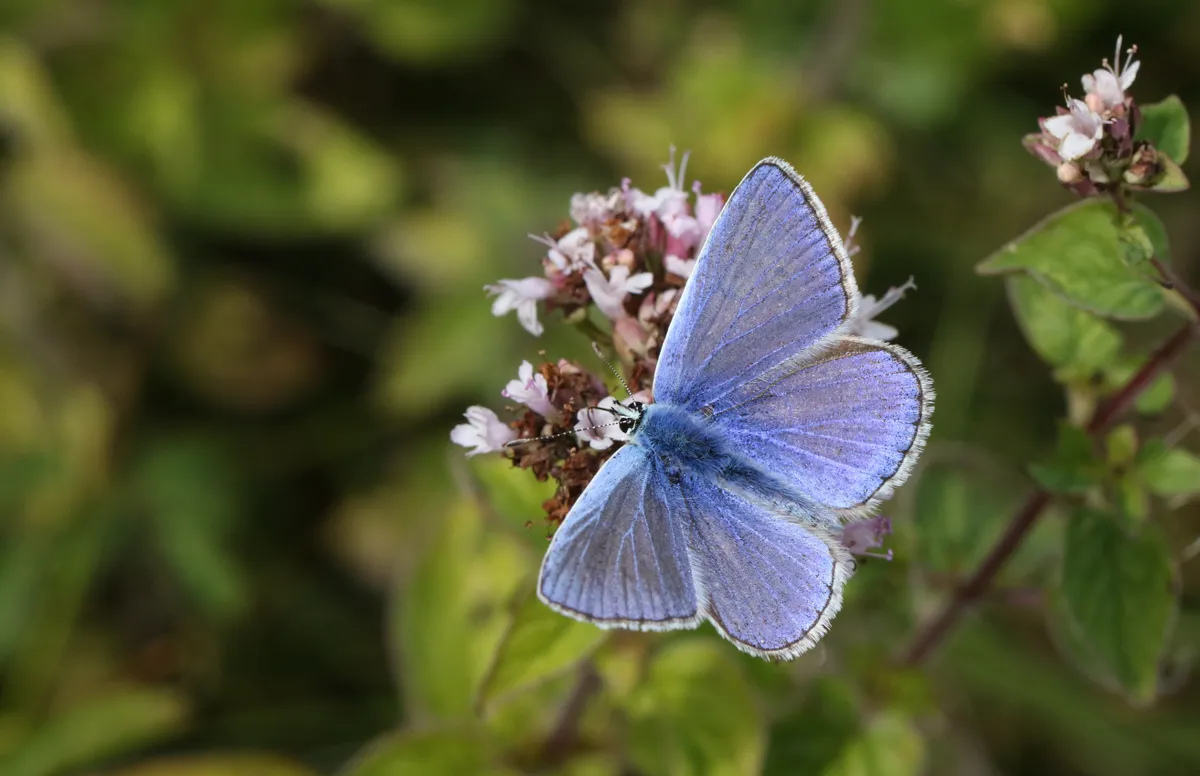
Our commonest blue, occurring in various grassland habitats, including road verges and industrial wasteland. Early and late summer broods. Hard to separate from other blues, especially the brown females; but identification suddenly clicks, and becomes easy. Tip: if it attacks another butterfly, it’s a male brown argus, not a female common blue. Tip: in the males, the underside markings often show through the blue upper sides, unlike in other blue males.
Breeds mainly on common bird's-foot-trefoil growing in short or sparse turf. Colonies thrive in modern agricultural ‘herbal leys’ where trefoils and clovers are sown to promote soil fertility.
Rare species of butterfly found in the UK
Duke of Burgundy (Hamearis lucina)
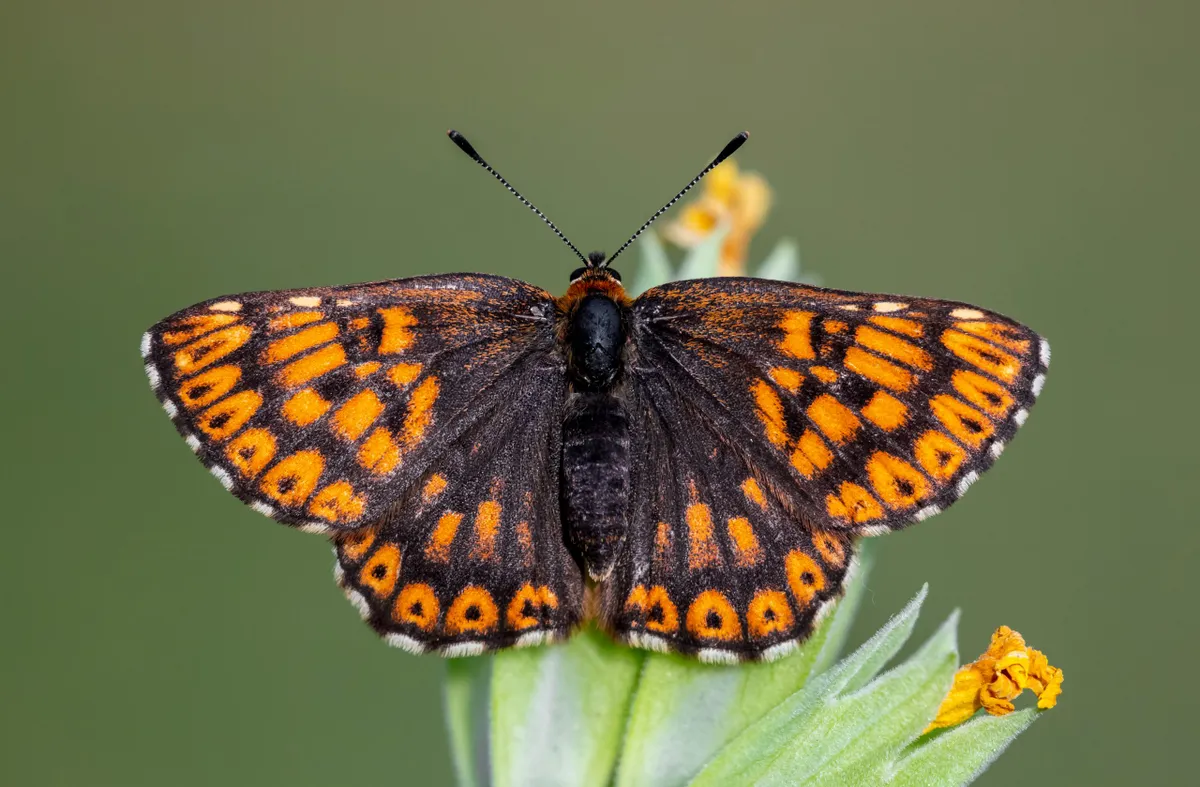
No one knows how this tiny early spring butterfly obtained its name. Formerly common locally in woods, the duke is now a rare and rapidly declining butterfly, primarily of rough, ungrazed or lightly grazed limestone grassland, where it breeds on cowslip and primrose leaves in shady situations.
Most colonies hold only a handful of butterflies. However, the males gather in sheltered territories, or leks, which are occupied annually. There they squabble like mad and launch themselves against all-comers.
They are most active in the mornings, becoming quiescent after 2pm. The duke flies at cowslip time, late April through to late May, and nowadays is best seen in early to mid May.
Where to see
Top sites are Noar Hill near Selborne in Hampshire, Heyshott Down on the West Sussex Downs, the lower slopes of Ivinghoe Beacon in the north Chilterns and Rodborough Common near Stroud in the Cotswolds.
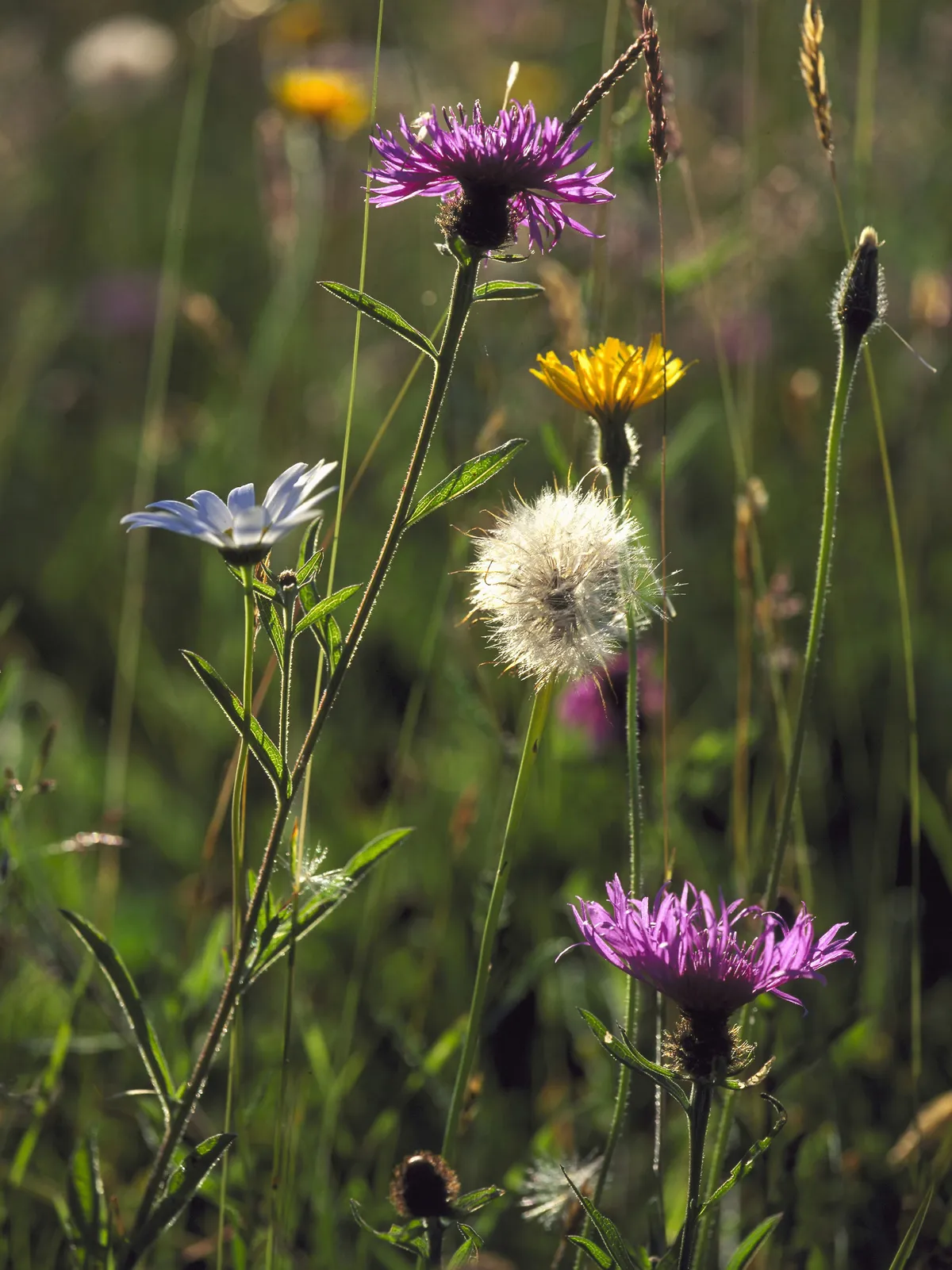
Pearl-bordered fritillary (Boloria euphrosyne)
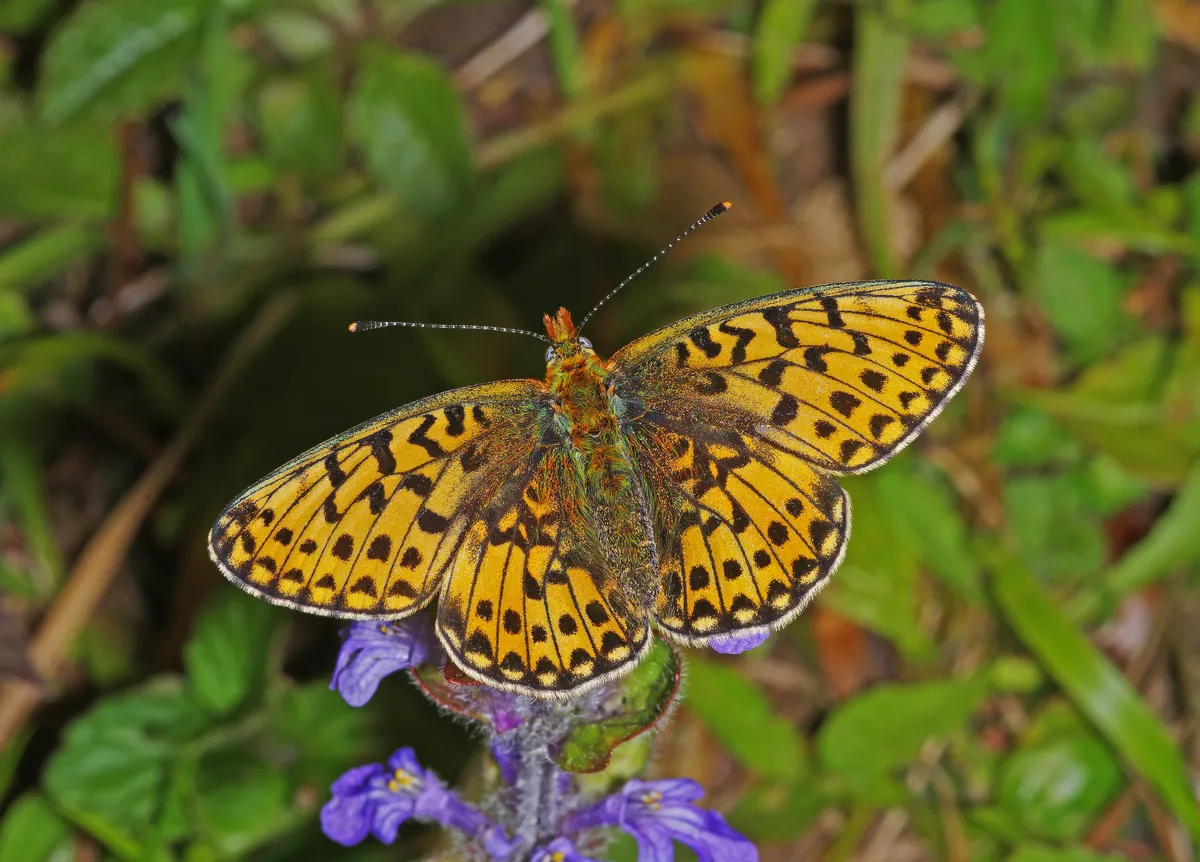
Another butterfly in rapid decline, having been widespread and locally common throughout southern and western mainland Britain.
It lives mainly in woodland clearings and on bracken hillsides, but also on rough limestone grassland around Morecambe Bay and along loch sides in the Western Highlands, breeding on violets among fallen leaves or dead bracken litter.
It flies mainly during May, but has early and late years, depending on the vagaries of spring weather. Cannily, it flies when the bugle, its favoured nectar source, is in flower. This is one of our most graceful butterflies in flight, skimming low over the ground vegetation, pausing only to visit flowers or bask, the males ceaselessly searching for females.
Where to see
The New Forest woods north-east of Brockenhurst (Pignal, New Copse and Parkhill inclosures), Bentley Wood in south-east Wiltshire, Cwm Soden near New Quay on the Ceredigion coast, Arnside Knott and Whitbarrow in south Cumbria, and Loch Arkaig in the Highlands. Try our walk at Bentley wood.
Large blue (Phengaris arion)
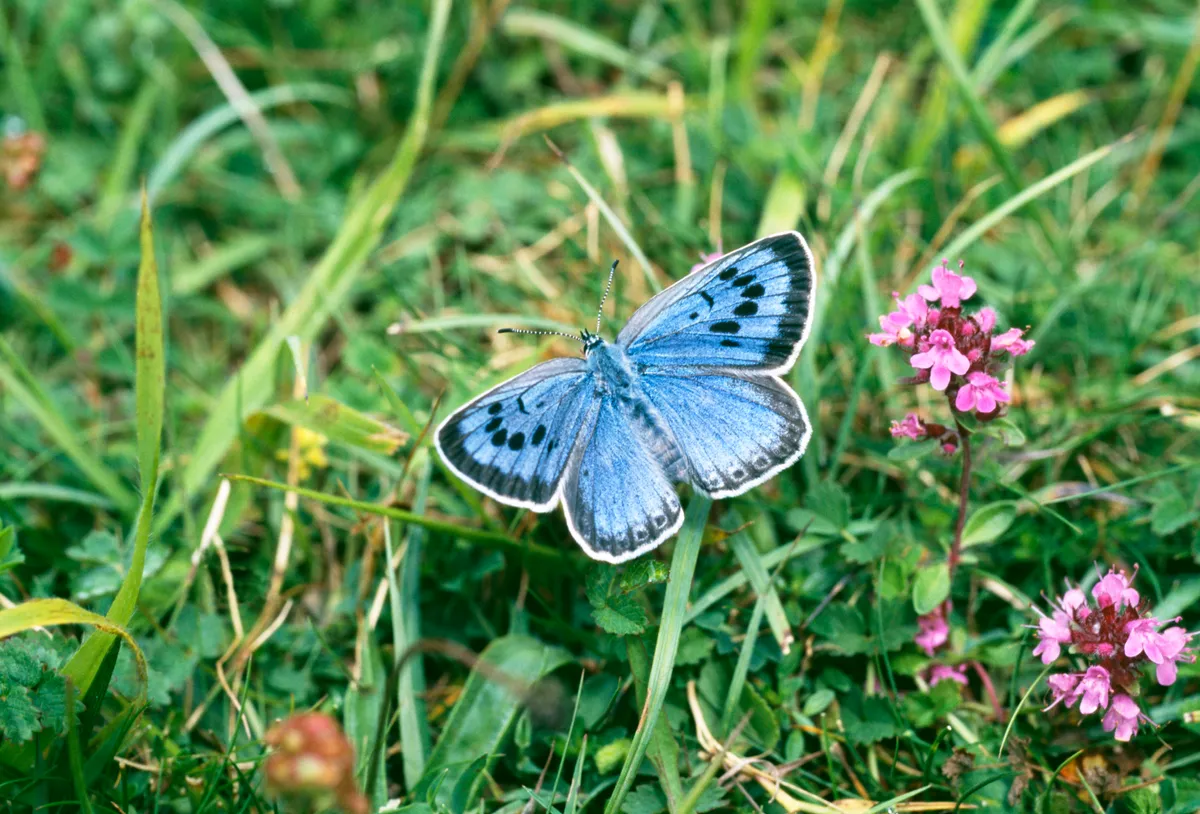
The British race of this magnificent royal blue butterfly was declared extinct in 1979. Since then, the Swedish race has been naturalised in the West Country by a dedicated team led by top butterfly scientist Prof Jeremy Thomas.
This race is now quite well established in the Polden Hills in mid Somerset, where several colonies result from natural spread. It is also being re-established in the Cotswolds and Devon.
It flies during June on sunny slopes where the grass is kept short, and visits wild thyme flowers. The larvae feed for a while on wild thyme before becoming predators of the grubs of a single species of warmth-loving red ant. The large blue lives for 10 months underground in the ant nests.
Where to see
Access is difficult at most sites, and most colonies are extremely small. The National Trust runs an open access site at Collard Hill, near Street, Somerset. This supports one of the largest known colonies in Europe.
British seasonal wildflowers guide: how to identify, when to see and where to find them
A splash of colour can always be found in the British countryside thanks to the wildflowers growing across meadows, coastal cliffs and wet habitats.
Our expert guide on how to identify, when to see and where to find them
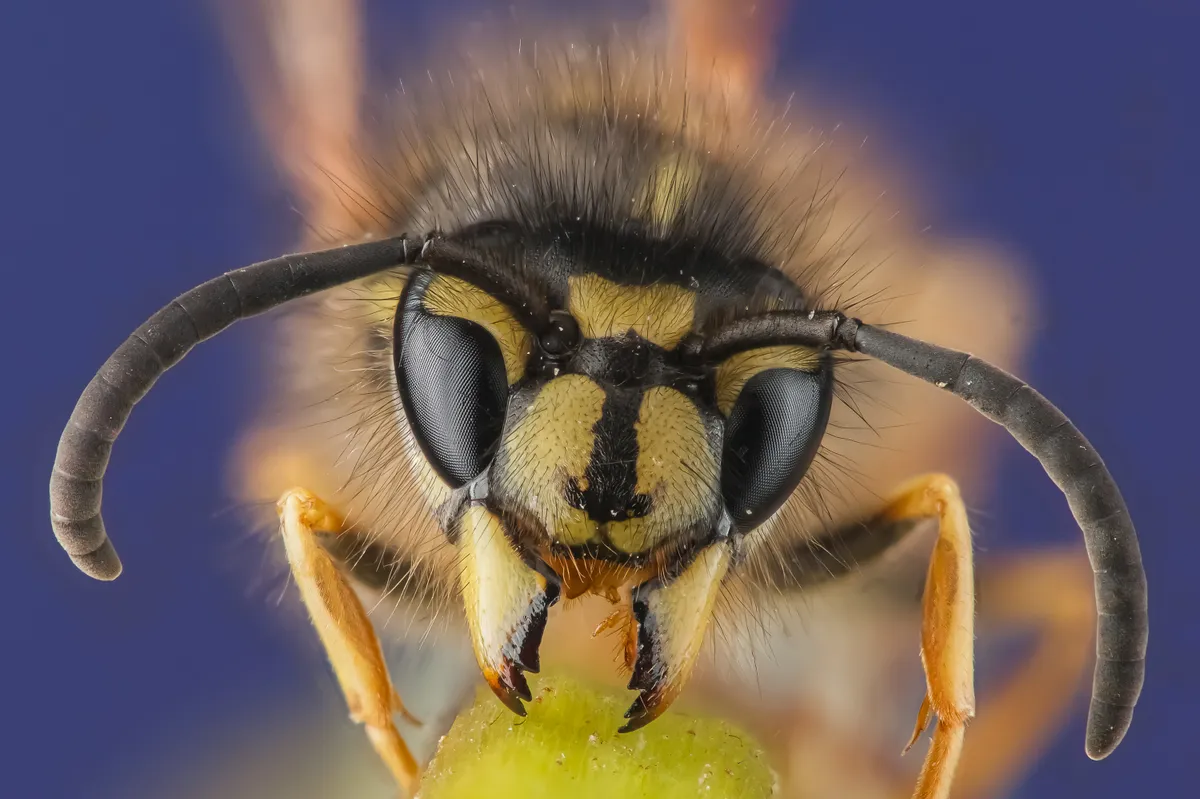
Swallowtail (Papilio machaon)
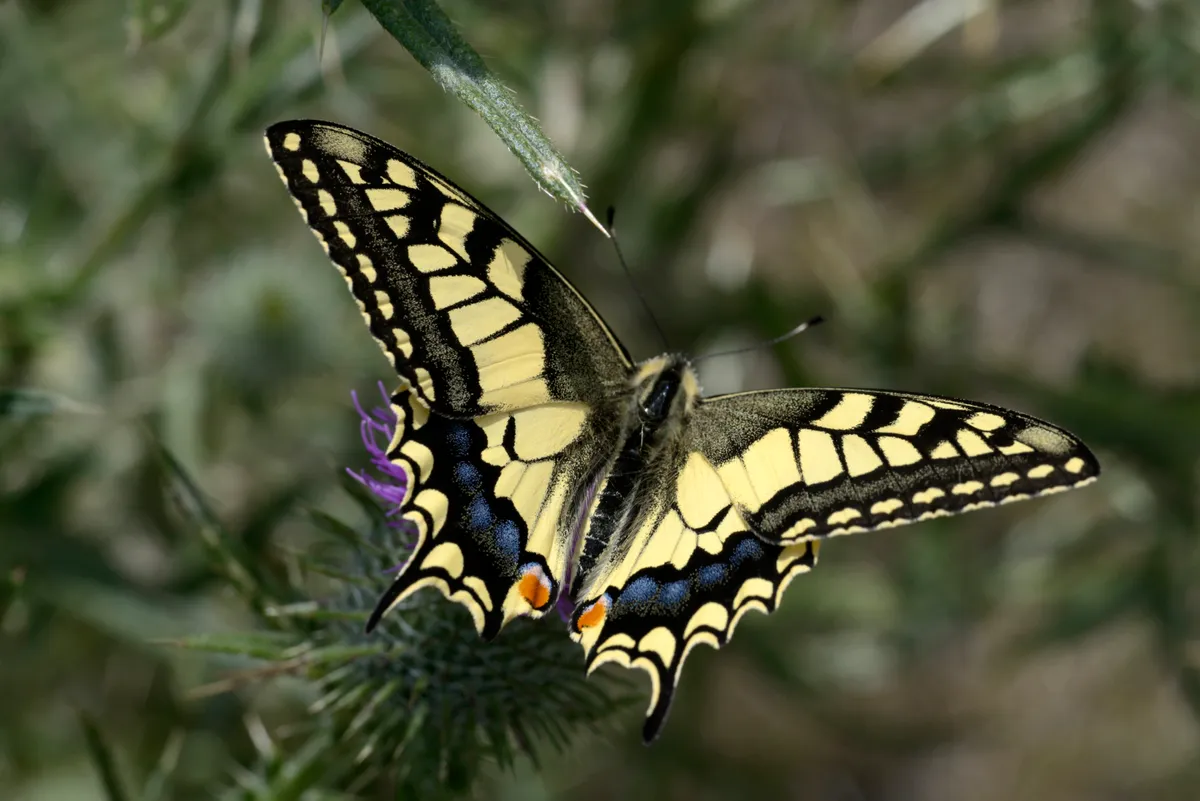
This tropical-looking butterfly is so large and colourful it can be spotted from 200m (650ft) away as it patrols over reedbeds. Today, it flies only in the major river valleys of the Norfolk Broads, where it breeds on milk parsley, a scarce wetland plant.
It is on the wing mainly from late May through to early July, though it is seldom numerous. In hot summers there is a partial, rather localised second brood during August. Swallowtails love the flowers of marsh thistle, bramble and flag iris, but hate wind. On windy days, they patrol sheltered areas in the lee of woodland.
Where to see
Pedestrian access is difficult on the Broads, but Hickling Broad National Nature Reserve (NNR) and How Hill nature reserve are good pay-for-entry sites, and the edges of Marsham Broad and the Butterfly Conservation reserve at Catfield Fen are also good. Mid to late June is usually the best time.
British wasp guide: how to identify common species, lifecycle and why wasps sting in autumn
These stinging picnic pests don’t deserve our enmity and fear – they are impressive architects that belong to highly developed and complex societies.
High brown fritillary (Argynnis adippe)
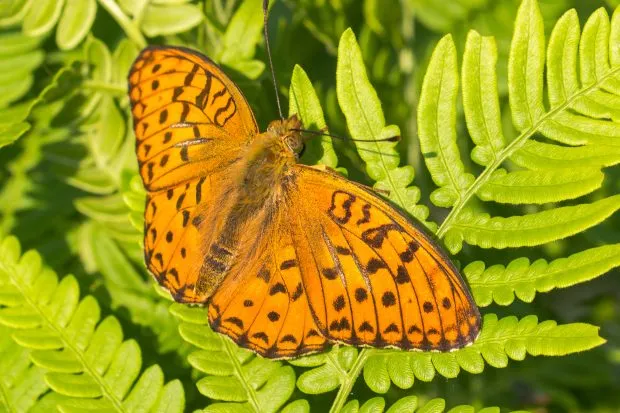
One of the loveliest of our butterflies, large, brilliant orange and most graceful, with pieces of silver on the hind wing undersides. But it is also our most rapidly declining butterfly, and is restricted now to a few bracken hillsides in the West Country, a tiny part of South Wales, and its stronghold – the lovely limestone hills around Morecambe Bay at the southern end of the Lake District.
It flies from mid June to late July (later in Morecambe Bay), and delights in basking on bracken fronds and visiting bramble, knapweed and thistle flowers. Its larvae feed on violets among leaf or bracken litter.
Where to see
Heddon Valley in Devon, Arnside Knott in Cumbria and the Whitbarrow massif near Witherslack, Cumbria.
Purple emperor (Apatura iris)

No one forgets their first purple emperor, our most impressive butterfly. It is brave, bold and powerful, but is hard to see as it lives mainly in the woodland canopy, is active only intermittently, and occurs at low population density.
Moreover, it does not visit flowers, though males periodically descend to woodland rides to imbibe moisture, often from unsavoury substances. In normal summers it is most numerous during the first two weeks of July – look for emperors when the white admirals and silver-washed fritillaries are well out.
Although associated with oaks in southern forests, it is actually a butterfly of sallow jungles in well-wooded landscapes, with the males gathering on groves of trees on sheltered hill tops, out of the wind.
Where to see
Bentley Wood, Wiltshire and Bookham Commons, Surrey, Botany Bay, Chiddingfold Forest, on the Sussex/Surrey border, and best of all, Fermyn Woods, near Corby in Northants.
Mountain ringlet (Erebia epiphron)
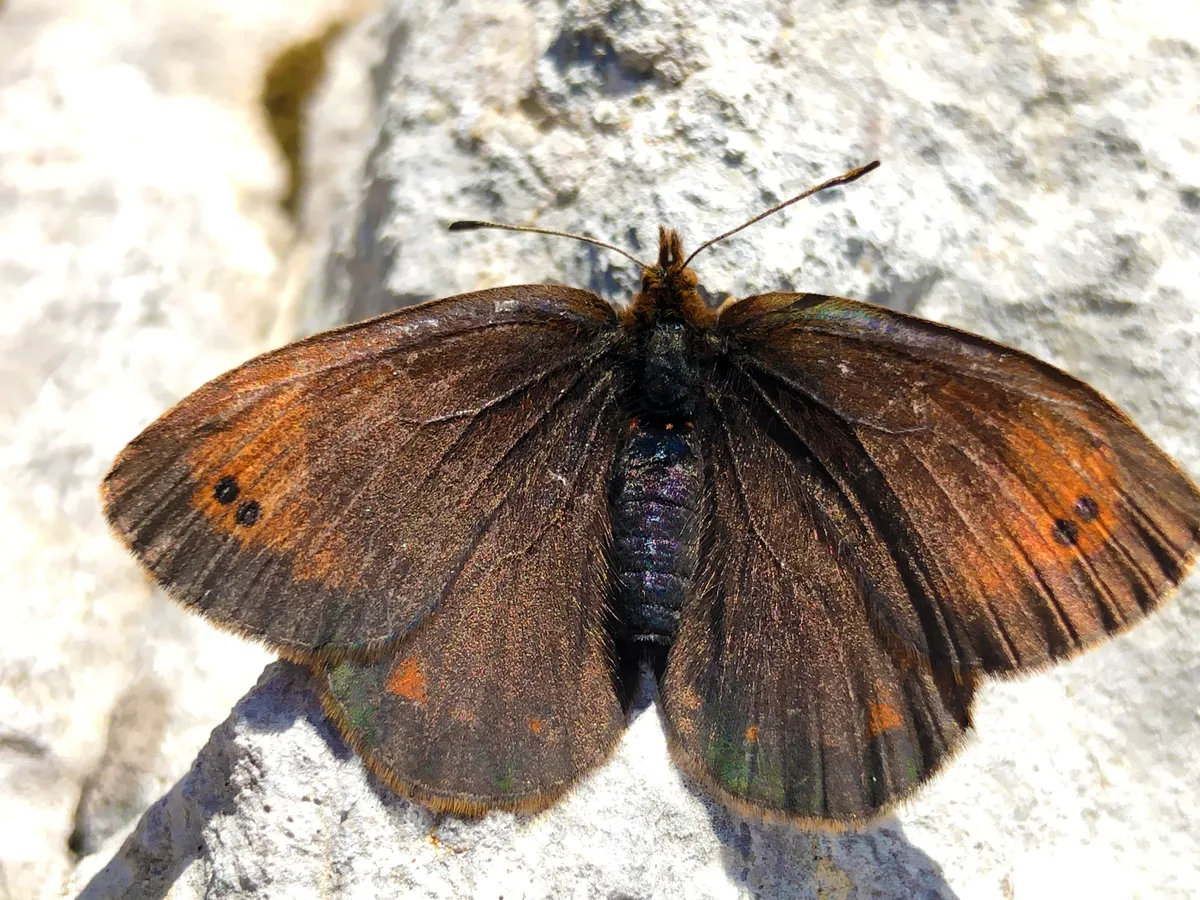
This is our only mountain butterfly, necessitating a midsummer trip to the high fells of the central Lake District or the mountains of the south-west Highlands. Most colonies are found above the 500m (1,640ft) contour line.
There, mountain ringlets blow about in the wind, crashing moth-like into tussocks, and feed avidly on tormentil and, where available, wild thyme flowers. But it is well worth the trip, for no other British butterfly is quite like the mountain ringlet, and the iridescence of freshly emerged specimens is exquisite.
The flight season is very variable, seemingly consisting of pulses of emergence from early June through to late July, with early and late flying colonies.
Where to see
Ben Lawers NNR, Perthshire, is the classic locality in Scotland. In the Lake District, the slopes of Fleetwith Pike above Honister Youth Hostel are renowned, also Wrynose Breast and Cold Pike.
Adonis blue (Polyommatus bellargus)
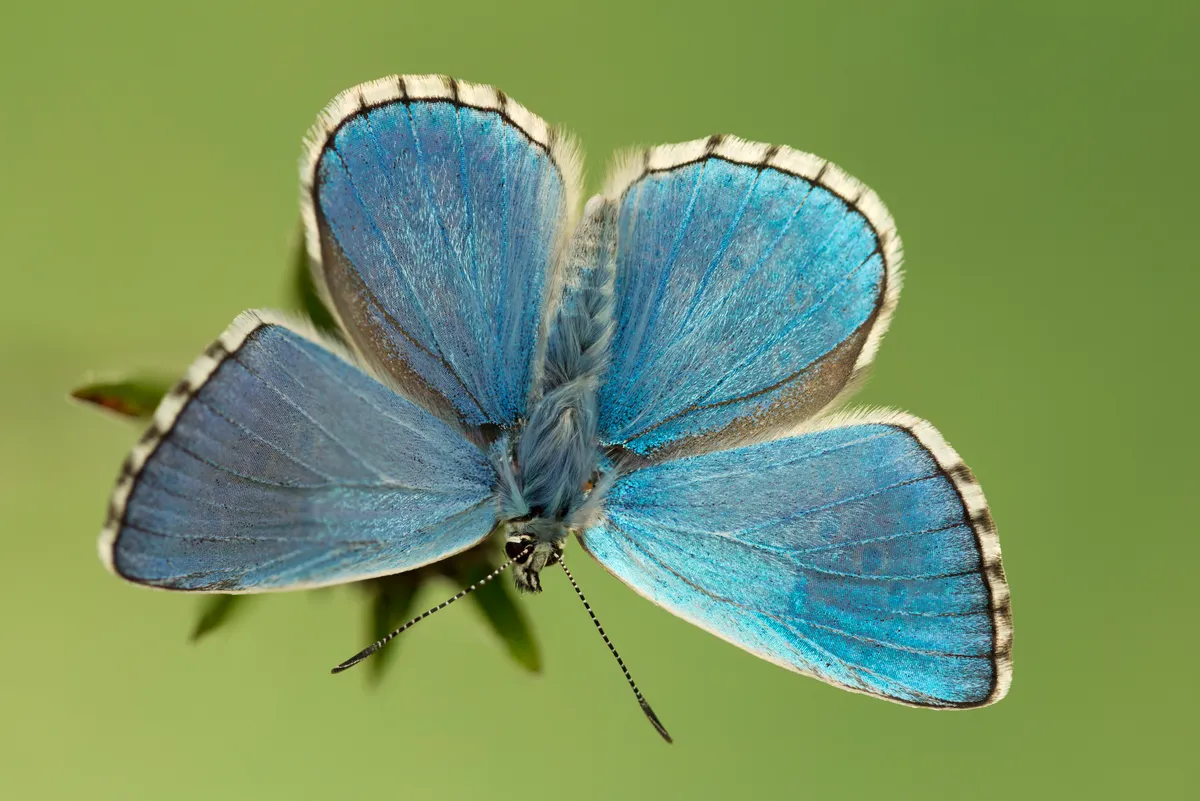
The electric iridescent blue of the male’s wings is almost tropical, making this one of our most special butterflies.
It is a local butterfly of south-facing chalk and limestone hillsides in southern England, though in favoured places it is often abundant, and it has recently expanded its range due to conservation efforts.
There are two broods, in early summer and again in late summer. The second brood is usually much stronger, and often coincides with the tail end of the chalkhill blue season, its sky blue cousin. These butterflies both breed on the same plant, horseshoe vetch, in short turf.
Where to see
The south-facing slopes of the Isle of Wight chalk ridge and the Purbeck Hills of Dorset, Denbies Hillside near Dorking on the North Downs, many of the Wiltshire downs, and Rodborough Common in the Cotswolds.
Brown hairstreak (Thecla betulae)
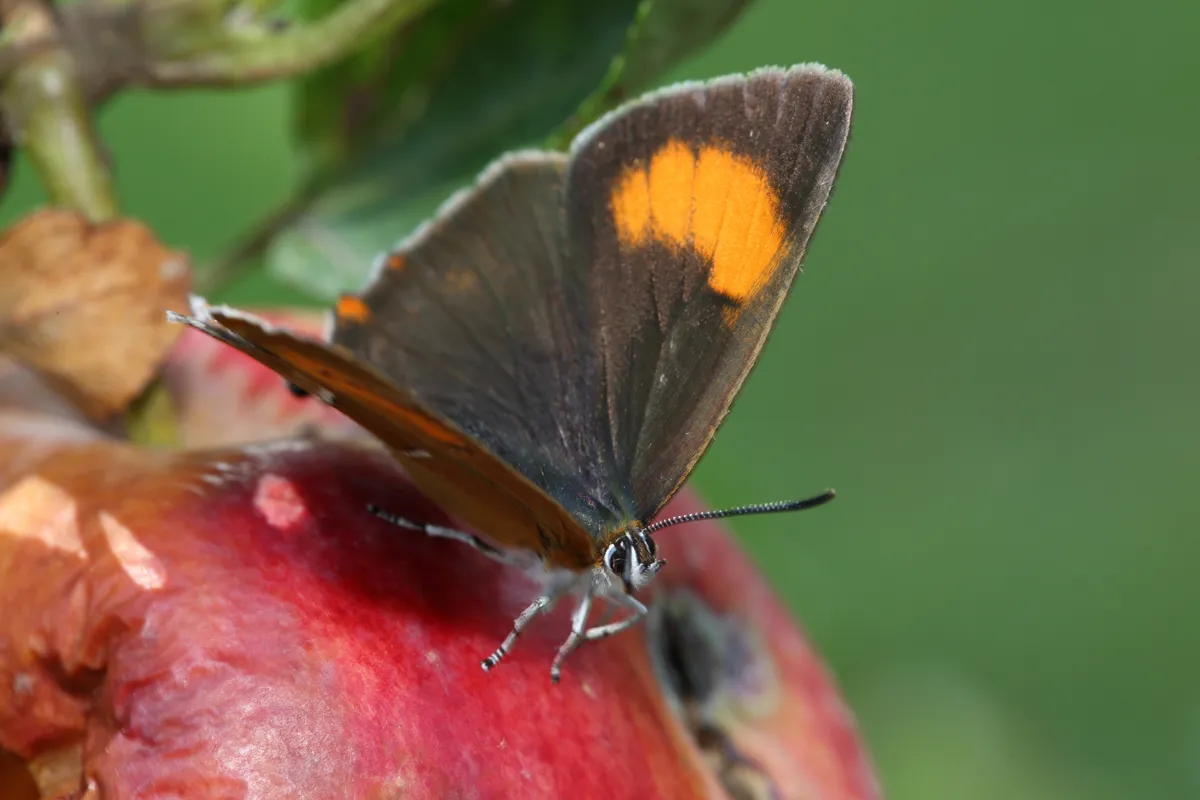
The latest of our butterflies to emerge, the brown hairstreak flies from late July into September. This is one of our hardest butterflies to see, as observing it requires much standing around, waiting, searching ash trees with binoculars and neck ache.
It occurs at low population density in landscapes rich in blackthorn, the larval foodplant, but is indolent and flies mostly in early mornings.
The males then laze around, high up on ash trees close to blackthorn hedges or tangles, where they feed from sticky ash buds. Sometimes males and females visit angelica, bramble and hemp agrimony flowers. Females flit about in early afternoon, laying eggs on blackthorn shoots and basking in late summer sunshine.
Where to see
Alners Gorse in north Dorset, Noar Hill in east Hampshire, Shipton Bellinger Roughs in west Hampshire, the Steyning Rifle Range in West Sussex, and Bernwood Meadows in Oxfordshire.
White admiral (Limenitis camilla)

Our most graceful butterfly in flight, the white admiral effortlessly skims the edges of trees and bushes along woodland rides in southern England, where it is common locally.
No insect loves woodland bramble flowers more, or graces them better. It is most numerous in late June and early July, but flies for only about a month. The larvae live in honeysuckle tangles situated in dappled shade. Occasionally specimens lack the distinctive white bands. The undersides of these ‘black admirals’ are especially beautiful – a once-or-twice in a lifetime experience.
Where to see
White admirals occur in many southern woods, but they are particularly numerous at Bookham Common near Leatherhead in Surrey, Pamber Forest south of Reading, and the southern parts of Alice Holt Forest in east Hampshire. These woods also support good populations of the large and spectacular silver-washed fritillary, the happiest of butterflies, which flies at the same time as the white admiral.
Where to see butterflies in the UK
Meadows and pastures provide food and shelter for butterflies – here are six more places to spot them in summer.
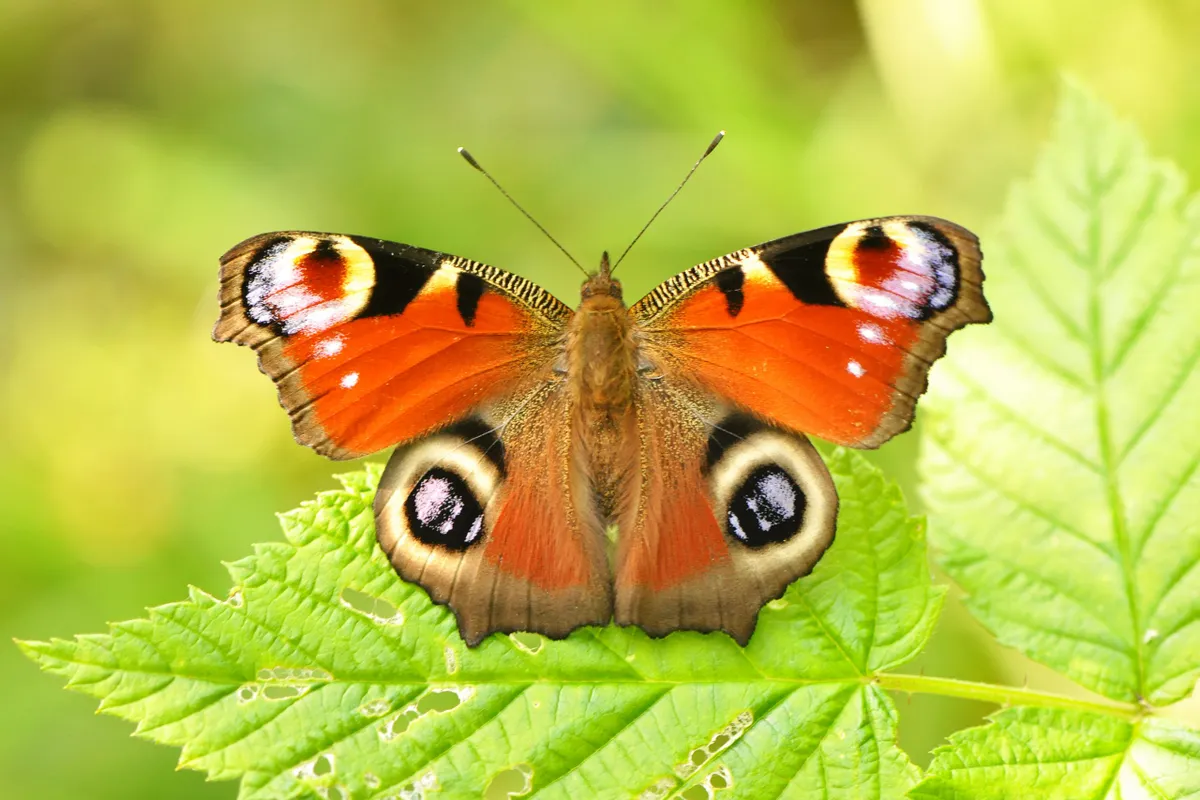
Slievenacloy, County Antrim
This reserve’s highest point overlooks Belfast and, on a clear day, you can see five of the six counties of Northern Ireland. Slievenacloy is known for its orchids (nine species) and waxcap fungi (26 species), but it is also one of the best sites in Northern Ireland for Lepidoptera. Species to look out for include the small copper, common blue and dark green fritillary butterfly. ulsterwildlife.org

Yorkshire Dales, Yorkshire
Named for its many river valleys, the Yorkshire Dales National Park was created in 1954 and is home to a wealth of wildlife, including butterflies. Between early June and mid-August, look out for the rare northern brown argus in areas of unimproved limestone grassland. natureinthedales.org.uk
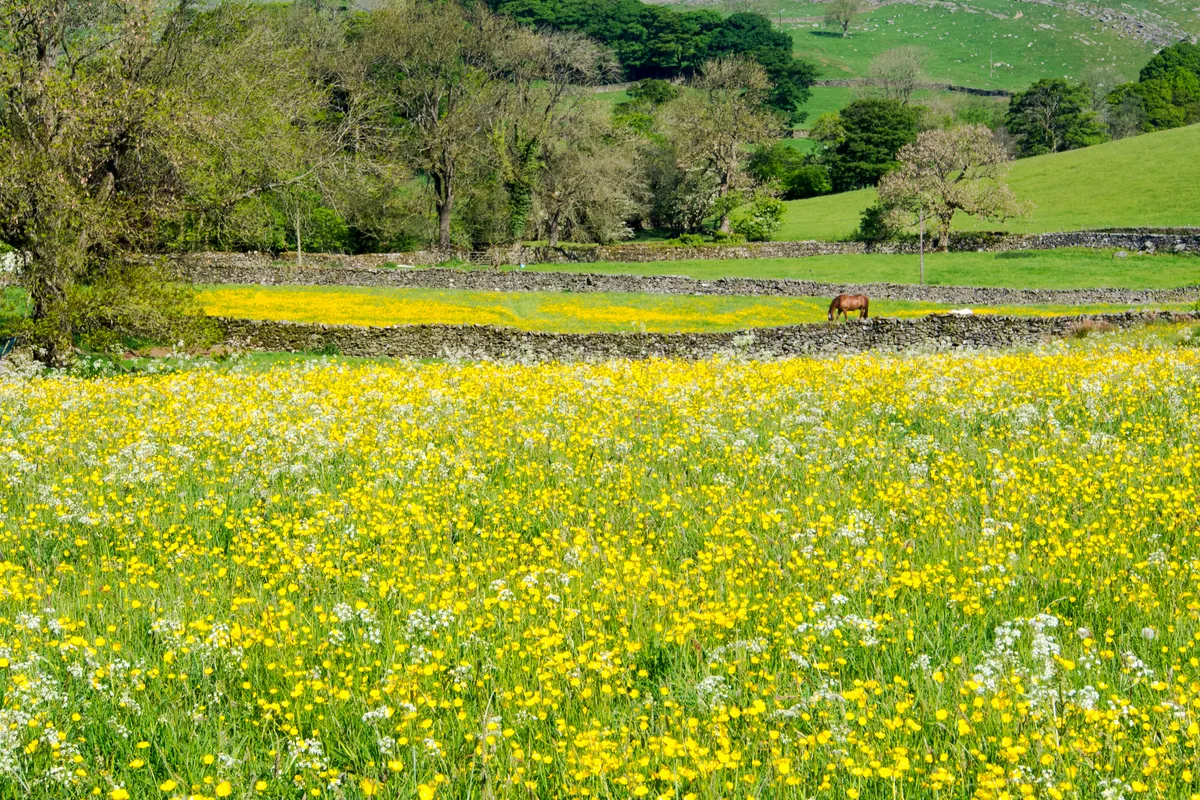
Box Hill, Surrey
More than 40 butterfly species can be seen at Box Hill in the Surrey Hills AONB thanks to its mix of habitats. The chalk North Downs grasslands support a range of blue butterflies, including the chalkhill and Adonis. The hillsides and woodlands are also home to silver-spotted skippers, dark green and silver-washed fritillaries, white admirals and purple emperors. nationaltrust.org
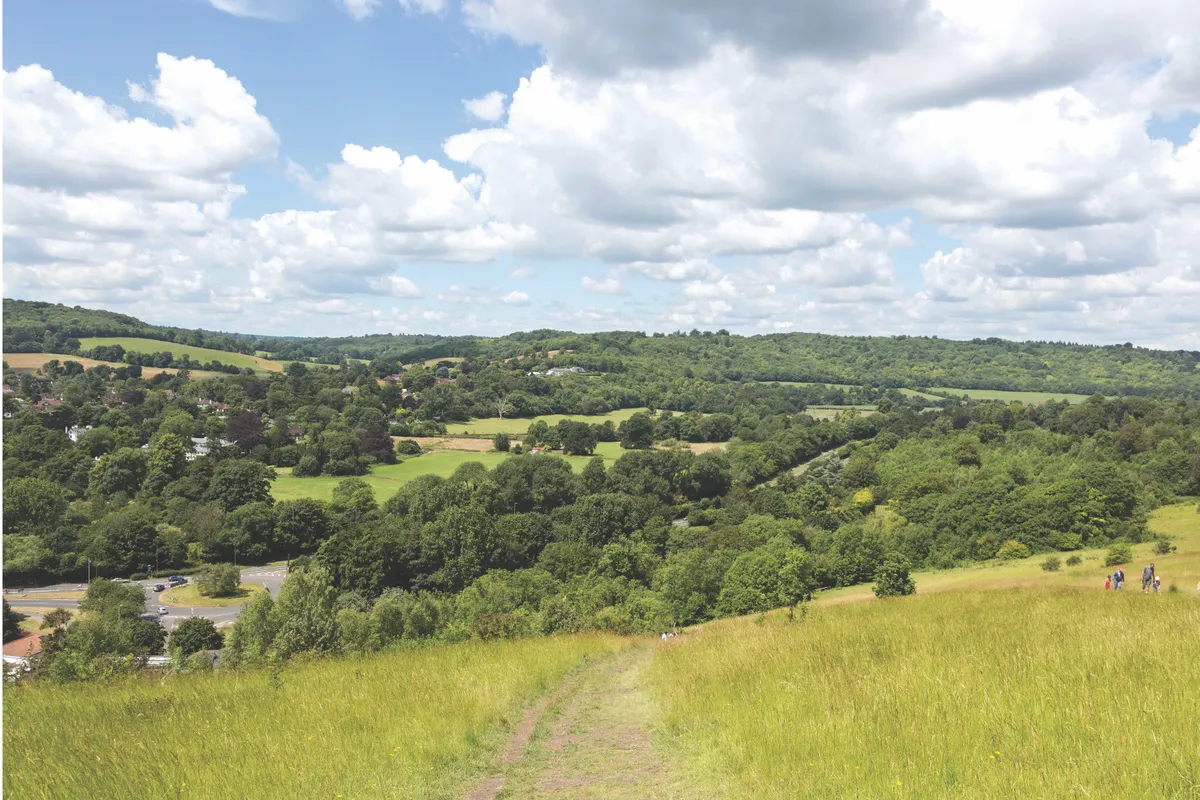
Snakeholme Pit, Lincolnshire
For such a small reserve (0.8 hectares), Snakeholme Pit has an impressive number of butterfly species, including the purple hairstreak (pictured) and white admiral. The former clay pit was used as a fish nursery and now supports various dragonflies and damselflies, as well as kingfishers, nightingales and adder’s-tongue ferns. butterfly-conservation.org

Lorton Meadows, Dorset
Nestled within the city of Weymouth is the 75-hectare Lorton Meadows. Small, large and Essex skippers, marbled whites and small coppers reside here, but keep an eye out too for dragonflies and orchids as you explore the meadows. The reserve is also the start of the Legacy Trail to Portland Bill. dorsetwildlifetrust.org.uk
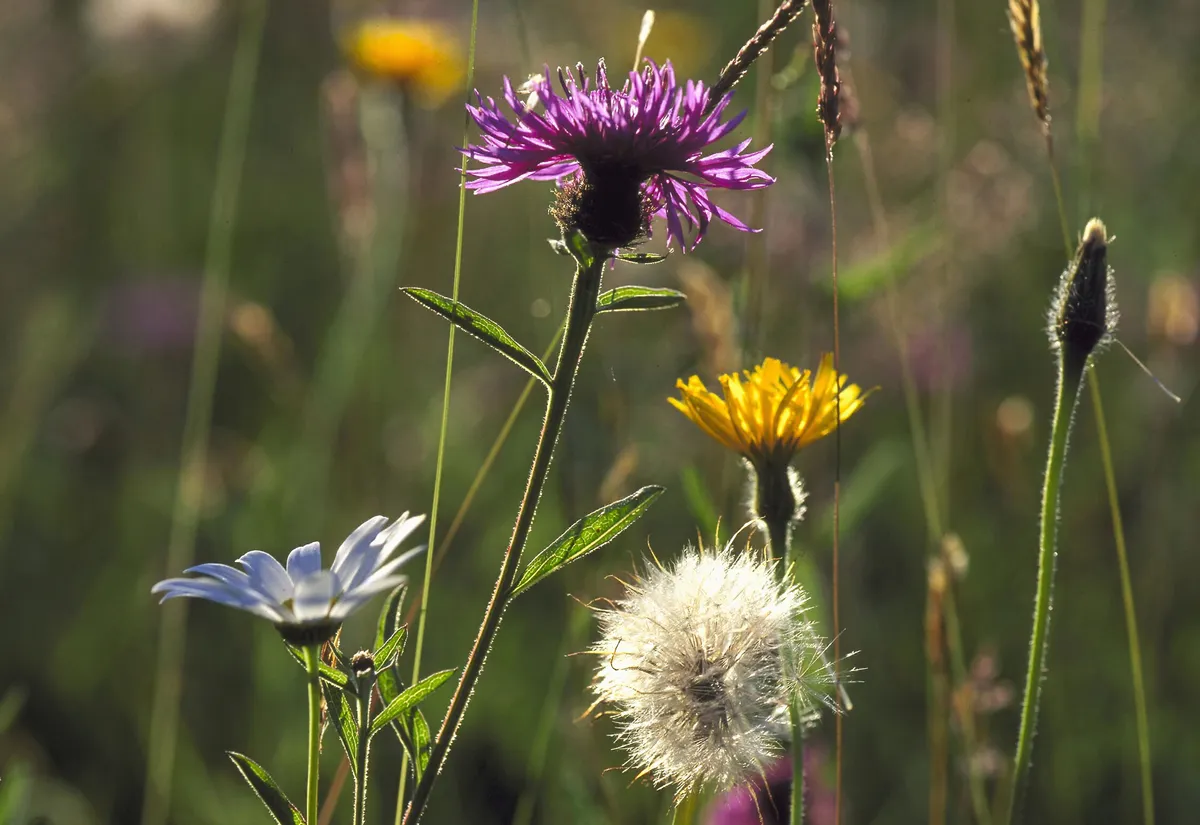
Gilfach Farm, Powys
Purple and green hairstreak butterflies live among Gilfach’s meadows, open moorland and oak woodland, alongside dark green and small pearl-bordered fritillaries. Visit later in the year and you may be lucky enough to see salmon leaping up River Marteg’s waterfalls. rwtwales.org
What do butterflies eat?
UK Butterflies feed on nectar, collected from flowers that grow in gardens, parks and the countryside.
How to attract butterflies to your garden
Provide a food source
Grow nectar-rich plants for butterflies to feed such as bluebells, buddleia, cranebills, lavender and wildflowers. Allow your grass to grow a little longer and leave daisies, buttercups and clover for insects. Keep plants watered in drier months to help keep the supply of nectar going during the summer.
Avoid using pesticides
Unsurprisingly, pesticides are harmful to butterflies and other insects. If possible, avoid using them during the peak butterfly months of spring and summer to allow the species chance to thrive.
Allow some weeds to grow
Leave your garden to grow wild. Butterflies need longer grasses for warmth and shelter, so if you can leave the edge of your lawn to grow longer and leave the odd weed for butterflies to lay larvae.
